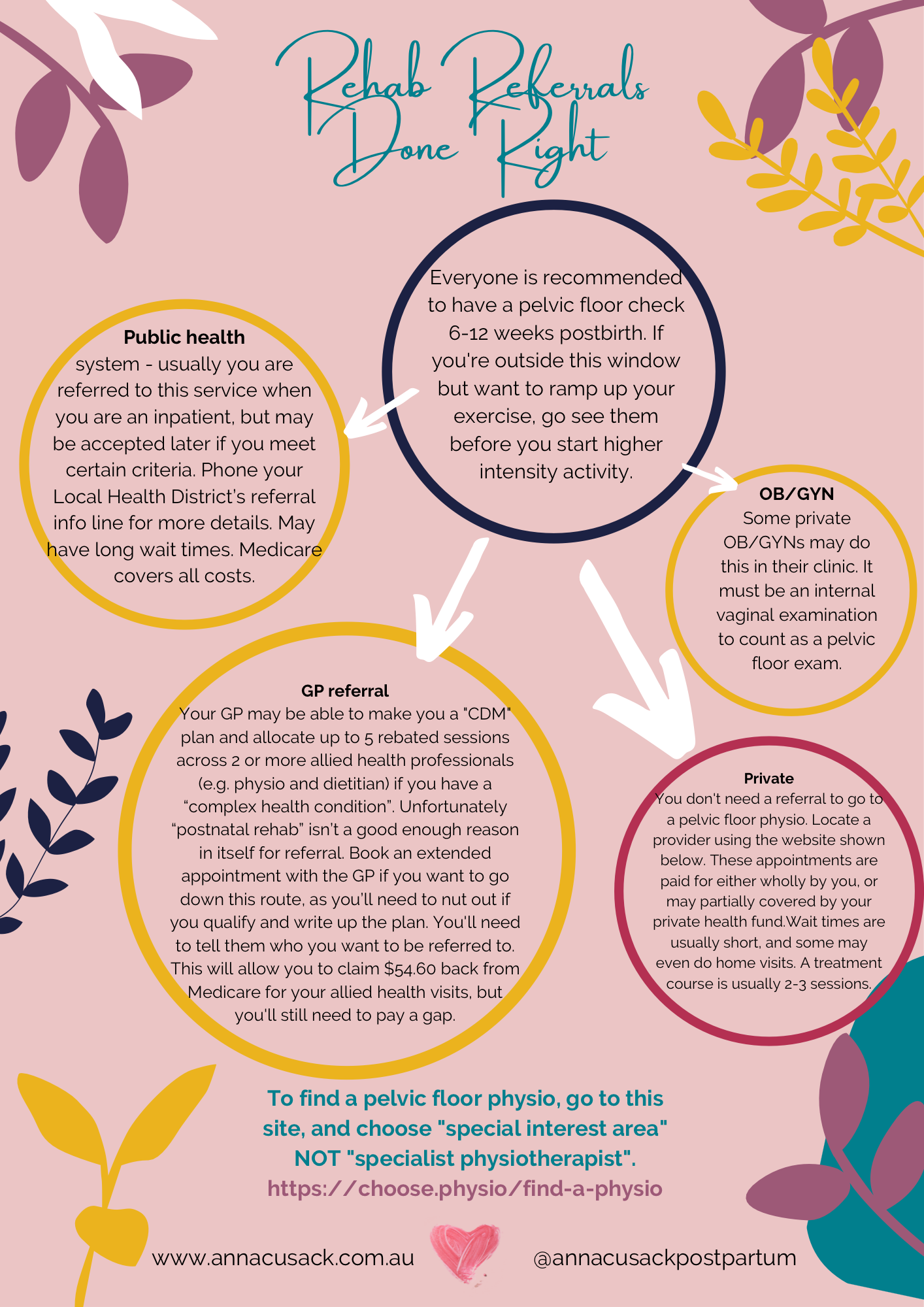Postbirth Pelvic Floor Tips

If the idea of jumping on the trampoline or chasing after a bus sends shivers down your spine, it’s very likely your pelvic floor has some room for improvement.
The official stat is that 1 in 3 women who have ever had a baby wet themselves, but the figure is probably higher if we counted those women who avoid aggravating activities or just lose a little bit of wee when they laugh or cough or pick up a heavy kid when they’re busting for the loo.
Regardless of whether your baby was born last month or last decade, symptoms of incontinence can be cured or greatly assisted with management strategies and physical rehabilitation plans.
Here are some tips:
- Exhale as you pick up heavy things, including your kids.
- Get your position right for number twos (a footstool will help with this).
- Don’t strain! Avoid constipation by eating high fibre foods and drinking plenty of water. And don’t rush to get it done faster than it's ready to come out.
- Reduce your intake of substances that irritate your bladder like caffeinated coffee, fizzy drinks, energy drinks and tea (black and green teas, but not other herbal tea).
- Get coughing under control. Getting asthma medication right, stopping smoking and lowering exposure to other allergens help to reduce coughing. Coughing puts a lot of pressure on the pelvic floor.
- Drink enough water. Not drinking enough water can irritate your bladder and make you constipated. If you’re nursing it can also reduce your milk supply.
- Do the kegels like the midwife says.
- Realise that kegels are the first step, not the last. Whole body resistance exercises actually have a greater capacity for pelvic floor activation than isolated ones like pelvic floor squeezes. Use the kegels as ground work knowing that it’s a stepping stone to other activities.
- Get a pelvic floor physio check. Leakiness can happen because of too weak or too tight pelvic floors, so a personal consult is your best bet. A couple months post-birth is ideal, but they don’t “expire” - any time after that is great too. They’ll do a thorough assessment and see what your best course of action is (see the graphic below to learn about referral options). If you’re in Newcastle, I recommend Fit-4-2 and Complete Pelvic Floor Physiotherapy.
- If a pelvic floor physio isn’t available in your area you can use a program that is pelvic floor safe and has progressive rehab components. The gold standard (in my opinion) for this option is the Empowered Motherhood Program (one of its creators Kimberley Smith is interviewed on ep 16 of my podcast) with various options for pregnancy, different pelvic floor and postnatal health conditions.
- If all that’s right but something feels off or birth was complicated, it pays to know that pelvic health is a whole deal more complex than just the physical stuff. Its energetics and sexual aspects are explored in this book (Body Conscious, by Taryn Gaudin)
- If you work with women postnatally (doulas, PTs, massage therapists etc) and want to know what kind of flags to look out for or understand rehab foundations better you can grab my “Moving Well After Baby” content bundle (1.5hr video, 4 page printable PDF including A4 of the graphic below, and useful resource links) here for $25 AUD.

Categories
- News (33)
- Breastfeeding (22)
- Post-partum (69)
- Sleep (14)
- Food (7)
- Partners (19)
- Rehab (2)
- Parenting (51)
- Birth (21)
- Pandemic (14)
- Research Update (5)
- Decolonisation (2)
- Covid (14)
- Education (8)
- Motherhood (43)
- vaccines (2)
- Children (9)
- self employed (2)
- government policy (3)
- feminism (10)
- abortion (3)
- lockdown (3)
- infancy (1)
- gentle parenting (10)
- infertility (1)
- parenthood (9)
- isolation (2)
- village (5)
- Pregnancy (7)
- Podcast (2)
- Mental Health (5)
- Career (2)
- Mental Load (1)
- Community (1)
- Technology (1)
- Doula (2)
0 comments
Leave a comment
Please log in or register to post a comment